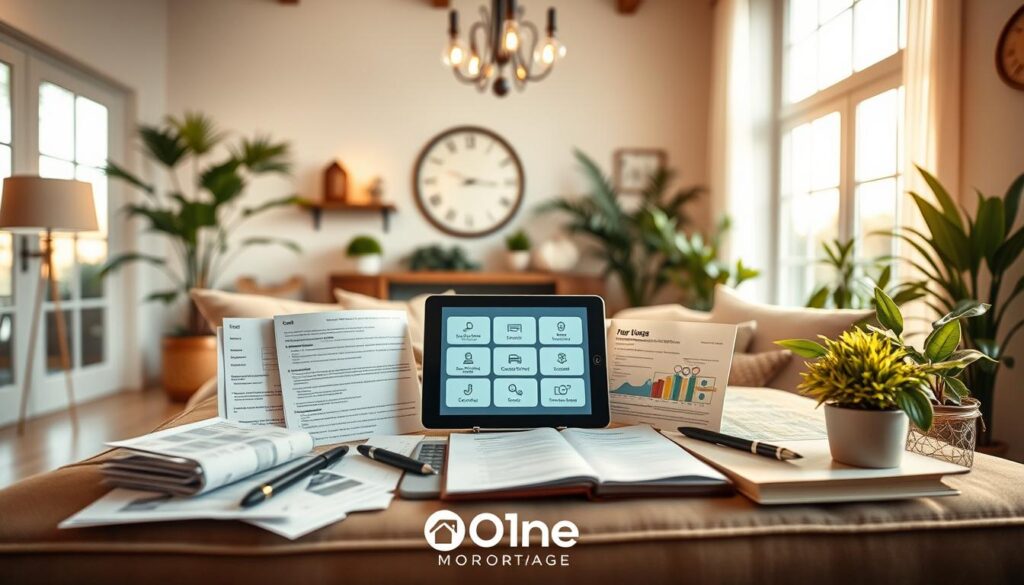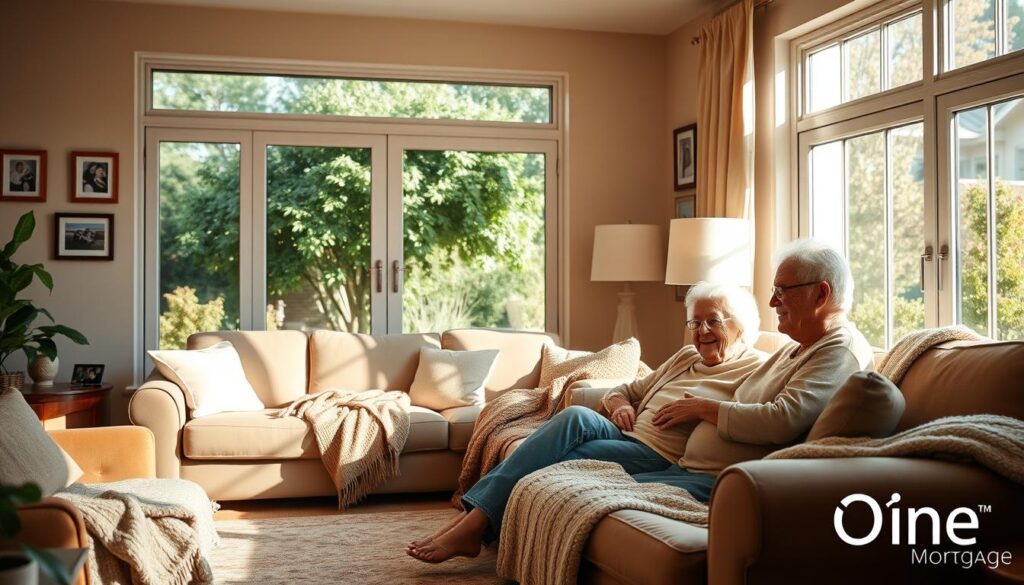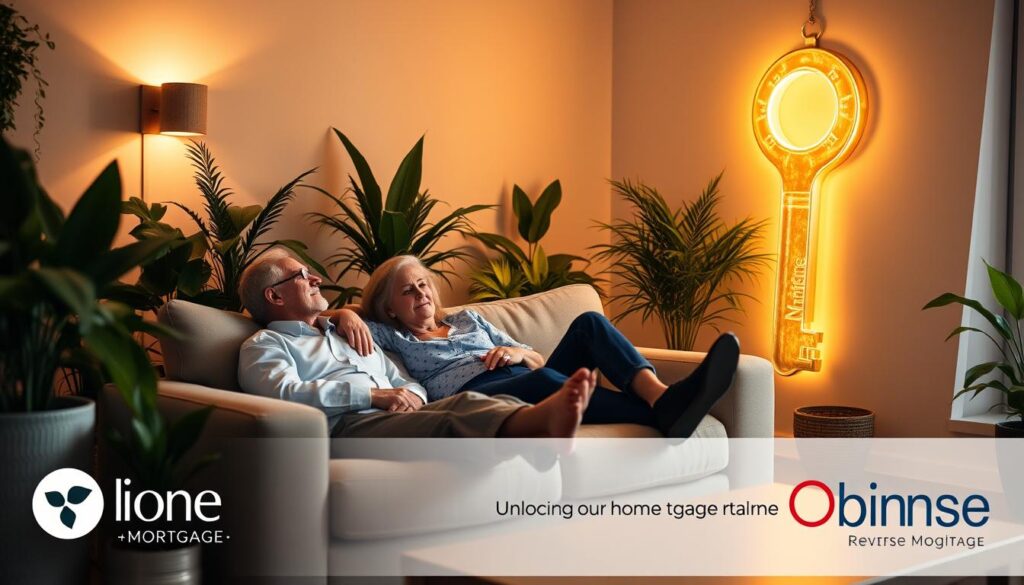As we observe the shifting landscape of retirement planning, the concept of a Reverse Mortgage emerges as a beacon of financial security for many. Specifically designed to meet the needs of senior homeowners, a Reverse Mortgage, or an Equity Release arrangement, provides the opportunity to enhance your retirement years without the burden of monthly payments. By tapping into your home’s equity, it becomes possible to forge a path toward sustainable living and comfort.
Indeed, Retirement Planning now often entails considering the use of a Reverse Mortgage. With the majority of Americans recognizing the reality of a retirement crisis, it becomes imperative to explore innovative solutions. This financial instrument grants individuals the power to access their home’s equity in a manner that can alleviate the pressures of this widespread concern.
Our commitment to enhancing Financial Security for retirees lies at the core of endorsing Reverse Mortgages. This strategic option invites senior homeowners to unlock the full potential of their greatest asset — their home. Herein, we embrace the challenge and responsibility of guiding through the maze of retirement options to arrive at a seat of stability and contentment.
Key Takeaways
- Reverse Mortgage transforms home equity into financial support during retirement.
- Equity Release offers a response to the prevailing retirement funding concerns.
- Adoption of a Reverse Mortgage does not entail monthly mortgage payments.
- Retirement Planning integrates the benefits of a Reverse Mortgage for improved quality of life.
- Financial Security can be significantly enhanced through strategic use of a Reverse Mortgage.
The Financial Lifeline of Reverse Mortgages for Retirement
A solution that is increasingly becoming a cornerstone of financial planning for many American seniors is the reverse mortgage. As an innovative option amid the scope of senior loan options, reverse mortgages provide substantial support to those needing to enhance their retirement savings and maintain their lifestyle post-retirement without the burden of monthly repayments.
The Retirement Crisis and Financial Strain on Seniors
Current trends show a marked increase in financial instability among seniors. Factors such as inadequate retirement savings, longevity outpacing savings, and the relentless rise in healthcare costs contribute to a daunting financial landscape for many retired individuals. It’s in these areas that the benefits of a reverse mortgage really come to the fore, offering a financial lifeline when traditional means may no longer be viable.
Understanding Home Equity Conversion Mortgage (HECM)
HECM, or Home Equity Conversion Mortgage, represents the most prevalent type of reverse mortgage. This form of financial relief allows seniors to convert part of the equity in their home into cash. The beauty of HECM lies in its borrower-friendly features: no requirement for monthly mortgage payments, and a repayment obligation that doesn’t exceed the home’s value, protecting other retirement savings from being drained.
Senior Homeowner Loan: An Alternative to Traditional Loans
Unlike conventional loans, which often require stringent credit qualifications and involve monthly repayments, reverse mortgages stand out as more accessible senior loan options. They allow seniors to leverage their home equity while retaining ownership. This setup not only provides financial relief but also ensures seniors can continue living in their homes, making it a highly attractive option for financial planning in one’s golden years.
Maximizing Benefits with a Reverse Mortgage
For senior homeowners, a reverse mortgage provides a strategic pathway to enhance cash flow and secure retirement income, ensuring a sustainable and comfortable retirement lifestyle. By understanding and utilizing the flexible loan disbursement options available, individuals can tailor their financial strategies to meet their specific needs and preferences.

Reverse mortgages stand as a vital tool for financial planning, offering multiple ways to increase your cash flow that aligns with your life’s rhythm:
Enhanced Cash Flow for Senior Homeowners
- Maintain ownership of your home while accessing its equity.
- Eliminate monthly mortgage payments, freeing up income to cover other expenses.
- Receive funds that are not taxable as income, thus preserving other retirement benefits.
Loan Disbursement Options that Suit Your Needs
The choice of how you receive the proceeds from a reverse mortgage is crucial. Here are some options:
- Lump sum: Get a full payment upfront, ideal for large, immediate expenses.
- Equal monthly payments: Guarantee a consistent supplement to your retirement income.
- Line of credit: Draw upon the available funds as needed, offering flexibility to manage unexpected costs.
These options provide meaningful ways to improve your retirement lifestyle by aligning your financial assets to your daily needs and long-term goals.
Protecting Your Assets: The Non-Recourse Loan Advantage
When considering a reverse mortgage, it’s vital to understand how a non-recourse loan plays a pivotal role in both asset protection and financial security. Such a loan structure ensures that homeowners and heirs are not financially overwhelmed should the market value of the home decrease below the loan balance at the time of repayment.
Mitigating Financial Risk in Reverse Mortgages
Non-recourse loans act as a safety net, ensuring that the financial risks associated with market fluctuations do not become a personal liability for the borrower or their family. This is essential in maintaining long-term financial security and ensuring that personal assets are safeguarded against unforeseen economic downturns.
Preserving Your Savings and Investments
By opting for a reverse mortgage, seniors can preserve their savings and other investment vehicles, allowing them to continue to experience investment growth without tapping into these vital resources prematurely. This strategic financial planning tool aids in securing a more stable and prosperous financial future.
| Benefits | Explanation |
|---|---|
| Protection from Debt Exceeding Asset Value | Ensures that heirs are not liable if home value at sale is less than the loan balance. |
| Asset Preservation | Allows seniors to retain their savings and other investments, fostering growth. |
| Stable Retirement | Supports a financially secure retirement by mitigating risks associated with property value changes. |
In integrating non-recourse loans into their financial strategy, seniors not only protect themselves from potential market volatility but also enhance their opportunities for investment growth and asset protection. This approach prioritizes both present well-being and future security, making it an invaluable option for many homeowners.
Evaluating Eligible Properties for Reverse Mortgages
When considering the acquisition of a reverse mortgage, understanding which Eligible Properties meet HUD Standards is crucial for homeowners. These standards ensure that all properties provide safe, secure, and sustainable environments for homeownership, aligning with federal requirements.
In our commitment to supporting secure Homeownership, we adhere strictly to the guidelines set out by HUD, which facilitates a more transparent and confident Property Evaluation process. Let us explore some key property types that typically qualify for a reverse mortgage.
- Single-family homes
- 2-4 unit properties with one unit occupied by the borrower
- HUD-approved condominiums
- Manufactured homes that meet FHA specifications
Each property type must undergo a thorough evaluation to ensure it meets the essential HUD’s safety and health standards, thus certifying its eligibility for a reverse mortgage.
| Type of Property | HUD Eligibility Criteria |
|---|---|
| Single-family home | Must be the primary residence of the borrower, structurally sound, and meet all zoning and local code requirements |
| 2-4 unit property | One unit must be owner-occupied, and the property must be free from health and safety hazards |
| HUD-approved condominium | Condominium must be on the HUD’s approved condominium list and meet specific financial and occupancy criteria |
| Manufactured home | Must be permanently affixed to a foundation, have been built after June 15, 1976, and adhere to the Manufactured Home Construction and Safety Standards |
It is essential to understand that not all properties will qualify for a reverse mortgage simply due to their type. A detailed Property Evaluation is required to ensure each meets the exacting HUD Standards necessary for protecting the interests of homeowners.
Strategically Lowering Taxable Income with Loan Proceeds
When considering financial advising for retirement, reverse mortgages offer a compelling income strategy for lowering taxable income. By leveraging the proceeds from these loans, retirees can enjoy significant tax benefits, making this financial maneuver a critical component of sound retirement planning.
Indirect Tax Benefits of Reverse Mortgages
The unique structure of reverse mortgages prevents the proceeds from being taxed as income. This provides an excellent opportunity for retirees to reduce their annual tax liability while maintaining a steady flow of income. Managing taxable income effectively is essential, particularly when it involves major assets such as retirement funds.
How Reverse Mortgage Affects Retirement Accounts
Implementing a reverse mortgage can substantially conserve the value in retirement accounts. Funds from these accounts, like 401(k)s or IRA, often incur taxes upon withdrawal. However, accessing untaxed reverse mortgage proceeds can minimize the need to withdraw from these taxed accounts, thus preserving retirement savings for longer durations or for larger expenses, offering a strategic advantage in financial planning.
| Financial Strategy | Benefits |
|---|---|
| Use of Reverse Mortgage Proceeds | Preservation of Retirement Accounts, Reduced Tax Impact |
| Consultation with Financial Advisors | Tailored Advice on Investment and Income Strategy |
Exploring these strategies with experienced financial advising can guide retirees in maximizing their fiscal benefits. This approach not only optimizes current income but also ensures that the funds are sustained to support a comfortable and secure lifestyle throughout retirement.
Age in Place: The Emotional Benefits of Reverse Mortgages
Unlocking the value of your home through a reverse mortgage not only eases financial pressures but profoundly enhances emotional well-being. For many seniors, the ability to age comfortably within familiar surroundings offers invaluable peace of mind. Let’s explore how reverse mortgages can support emotional health and reinforce community bonds by enabling necessary home modifications.
Maintaining Autonomy and Comfort in Your Home
One of the core aspects of comfortable aging is the autonomy to make choices about daily living. Reverse mortgages provide the financial flexibility to make home modifications that can transform living spaces to be safer and more accessible. Installing no-step showers, upgraded lighting, and accessible kitchen settings are just a few examples that allow seniors to maintain independence and manage their lifestyle without compromise.
Aging in Place and Community Connection
Community bonds play a pivotal role in the emotional well-being of seniors. Staying in one’s home means maintaining established neighborly ties and community involvement. These connections are often a lifeline, providing both social interaction and emotional support. Investments in home modifications ensure not just safety but also mobility, enabling seniors to engage with their community fully.

Emphasizing the maintenance of personal spaces and relationships offers seniors a higher quality of life, reinforcing the value of emotional well-being in discussions around reverse mortgages. Our commitment extends to providing solutions that champion both financial and emotional security. Together, we can create an environment where aging in place becomes a source of joy and contentment.
Unlocking Your Home’s Value with Reverse Mortgage
As we age, the significance of financial empowerment grows, and understanding the mechanisms behind Home Equity Release can greatly enhance our security and quality of life. By tapping into the property value of one’s home, reverse mortgages present an optimal strategy for senior homeowners to supplement their income without having to sell their precious home.
Reverse mortgages allow for a flexible withdrawal of funds, which can be used for anything from urgent medical bills to leisurely pursuits. This financial tool leverages your property value to give you access to a reserve of cash, thus implicating considerable Homeowner Benefits. Whether it’s renovating your kitchen to finally putting in those granite countertops or setting up a fund for unforeseen emergencies, the opportunities are vast and tailored.
| Uses of Funds | Resulting Benefit |
|---|---|
| Home Renovations | Increases Property Value |
| Supplement Retirement Income | Enhances Quality of Life |
| Medical Expenses | Provides Peace of Mind |
| Leisure and Travel | Enriches Lifestyle |
It’s crucial for us to realize that accessibility to funds in your senior years shouldn’t be burdensome. Home Equity Release through reverse mortgages embodies a significant stride towards financial empowerment, offering peace of mind and stability when it’s needed the most. The control rests solely in your hands, ensuring that the final decisions align with your personal and financial goals.
Understanding Age Requirement and Loan Repayment in Reverse Mortgages
As we delve into the intricacies of reverse mortgages, a key factor to consider is the age criteria set by the Federal Housing Administration (FHA) guidelines. This benchmark dictates that homeowners must be at least 62 years old to qualify for a reverse mortgage, ensuring the product aligns with the retirement stage of an individual’s life. Additionally, understanding the nuances of loan repayment is critical. Circumstances involving life events can drastically affect the terms and timing of repayment, making it essential for borrowers to stay informed and prepared.
Navigating FHA’s Policies and Age Criteria
The FHA’s policies are designed to guarantee that reverse mortgages are both safe and accessible to the senior demographic they’re intended to assist. The established age criteria not only protects consumers by confirming their suitability for this type of financial arrangement but also helps in safeguarding the lender’s interests. By ensuring borrowers have reached the age of retirement, which the FHA acknowledges as 62 years, the risk of premature loan repayment is minimized, thereby benefiting both parties.
Life Events that Affect Reverse Mortgage Repayment
Life events can define the trajectory of loan repayment for reverse mortgages. Significant life changes, such as the passing of the borrower, selling the property, or transition to a new primary home due to health care needs, are pivotal in determining when the loan must be repaid. It’s crucial for current or prospective borrowers to understand these FHA guidelines, as these life events can trigger the necessity for loan repayment, which might have considerable implications for estate planning and financial stability.







